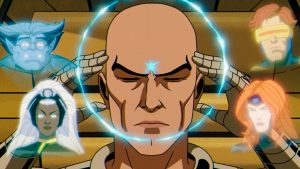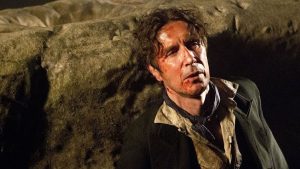
Does anyone remember the Satanic panic? It was a bizarre mix of urban legend, conspiracy theory, media frenzy, and religious fanaticism that occurred primarily in the early 1980s. The phenomenon was marked by thousands of alleged incidents of ritualized abuse, often involving children, and desecrations reportedly perpetrated across the nation by scores of so-called Satanic cults in towns and cities everywhere. While many of the reports were later found to be baseless—and the initial investigative techniques used to supposedly substantiate them discredited—the aftermath of the panic remains with us today in the shape of things such as QAnon and PizzaGate.
The roots of the Satanic panic were found in the late 1960s and ‘70s, thanks to books like The Satan Seller, social changes like the rise of the counterculture in the national zeitgeist, infamous events like the Manson Family murders, the introduction of new religions into American society, and the release of two seminal horror movies: Rosemary’s Baby in 1968 and The Exorcist in 1973.
The Devil, of course, had reared his ugly head onscreen as far back as 1897 and George Méliès’ The Laboratory of Mephistopheles. He also showed up in works like Faust (1926), Häxan (1929), and The Seventh Victim (1943), just to name a few. But Rosemary’s Baby was a turning point, bringing Satan out of the shadows and into New York’s Upper West Side where he plotted to raise his son among wealthy Manhattanites and disciples. The idea of Satan’s son being born into such circumstances rattled middle-American parents who were watching their own kids turn into dope-smoking, free-loving, drug-taking hippies.
The Satanic cinematic wave began there before cresting and powerfully smashing ashore in 1973 with The Exorcist. In the latter case, it was a pre-pubescent girl at the center of the horror, not in Manhattan but in a nice Georgetown home just a few train stops away from the seat of power in Washington D.C. For the next few years, Lucifer had an iron grip on the imaginations of horror fans and regular moviegoers, his influence only beginning to subside as the end of the decade neared and conservative values in the shape of Ronald Reagan took the nation firmly in hand again.
Satanic horror movies have lingered ever since (check out the newly released Longlegs), not quite as popular as that initial run but still making for some of the creepiest films of the ensuing decades. And it all started here, as the turbulent ‘60s turned into the decadent ‘70s, with the monsters of old—the ghosts, the wolfmen, the vampires – replaced by puking, foul-mouthed little girls, seductive, possessed women, abomination-born little boys, malevolent senior citizens, and diabolical law enforcement officials, collectively sending us all into… a panic.
The Devil Rides Out (1968)
While this list is about a film movement in the 1970s, it feels prudent to begin with one 1960s movie that is tangentially connected to it, although by virtue of its studio, The Devil Rides Out feels like it is from a wholly different time period. Based on a 1934 novel by British occult writer Dennis Wheatley, The Devil Rides Out is widely considered one of the best horror movies ever produced by the legendary Hammer Films. Strangely, while released in the same year as the thoroughly modern Rosemary’s Baby, The Devil Rides Out is still very much a period piece. Set in 1929, it follows the efforts of the Duc de Richleau (Christopher Lee, fantastic in a rare heroic role) and a band of allies as they struggle to defeat a Satanic cult led by the sinister Mocata (Charles Gray).
While its throwback setting and aesthetic may have seemed outdated by the time it came out, The Devil Rides Out not only remains a chilling chronicle of a battle between good and evil where the stakes keep escalating, but one of the most detailed explorations of the rituals of black magic—and the spells used to defeat it—committed to film up to that time. It adds realism and verisimilitude to a fantastic tale, and Mocata’s cult can be seen as an allegory for violent, depraved clans like the Manson Family.
The Blood on Satan’s Claw (1971)
Yes, this is a period piece as well—it’s set in an 18th century rural English village—and it’s generally considered one of the three major films, along with Witchfinder General and The Wicker Man, that paved the way for the folk horror genre. But The Blood on Satan’s Claw is disturbing for reasons that tie it to the more modern Satanic horror films coming out at the time, specifically the idea that the Devil would find children his easiest targets. This film came out the same year as William Peter Blatty’s The Exorcist novel was published, which means the film was not so much influenced by the concept as it was tapping into the same growing dread in the cultural zeitgeist.
The story follows the discovery of inhuman remains in a field outside the village, remains that turn out to be that of a demon. The entity begins to exert a malignant influence on the young people of the hamlet too. The children work to restore the demon to physical form, slaughtering anyone who gets in their way (notably, the local judge dismisses the idea at first that the supernatural or unholy is involved in any way). The idea of young people controlled by a malevolent figure was surely all too resonant at the time of the film’s release. The film is still shocking today: teen star Linda Hayden’s fully nude seduction of a priest and scenes in which the kids assault and murder one of their friends pack a disturbing punch.
The Mephisto Waltz (1971)
Following his entry into the sanctuaries of the Upper West Side in Rosemary’s Baby, Satan found his way to the California coast with this adaptation of a novel by Fred Mustard Stewart (the book itself takes place in NYC). A pre-M*A*S*H Alan Alda stars as Myles Clarkson, a music journalist who scores an interview with legendary pianist Duncan Ely (Curt Jurgens, best known as 007 villain Stromberg in The Spy Who Loved Me). Duncan and his daughter, Roxanne (Barbara Parkins), are Satanists, and Duncan, who is dying of leukemia, plans to enact a black magic rite to transfer his soul into Myles’ young body.
With its sunny setting and world of wealth and culture, The Mephisto Waltz is clearly channeling the same upper-class vibe as Rosemary’s Baby while touching on similar themes of corruption and ambition. It also delves into some pretty dark areas, including incest, child-killing, and more, and ends on a note where just about everyone has been debased or destroyed. Although Alda is miscast, the rest of the ensemble is terrific, the imagery is chilling, and Jerry Goldsmith (The Omen) delivers one of his trademark spooky scores in a film that probably should get a second look today.
The Brotherhood of Satan (1971)
You may have noticed a pattern with several of the films discussed so far in this article (Blood on Satan’s Claw excepted): in each case, an elderly person or a group of elderly people engage with Satan to further his ambitions or their own. That concept reaches its apogee in The Brotherhood of Satan, in which all the older folks in a small New Mexico town are part of a coven, with the aim of transferring their souls into the bodies of all the local children—including the daughter of a poor slob (Charles Bateman) who just happens to be passing through the place.
Strother Martin (Cool Hand Luke) stars as the head of the coven, who’s also the town doctor, while writer L.Q. Jones (who scripted and also directed the sci-fi cult classic, A Boy and His Dog) plays the town sheriff. The story is kind of full of holes if you think about it. For example, what are the old folks going to do in the kids’ bodies until they grow up? But it also reinforces the idea that isolated communities could be incubators for corruption and evil. The film has a nice, Stephen King-like vibe to it, and director Bernard McEveety brings just enough of a surreal flourish to the proceedings to keep you off-kilter.
Beyond the Door (1974)
The Exorcist landed like an atomic bomb in 1973. While the great tradition of Italian horror had already produced filmmakers like Mario Bava and Dario Argento, the Italians quickly capitalized on the American blockbuster’s success with some knockoffs that, while often lurid fun to watch, played up the physical grossness without the spiritual context and character development that made William Friedkin’s film such a masterpiece. In fact, after Beyond the Door was released, The Exorcist studio Warner Bros. sued producer/director Ovidio G. Assonitis’ production company for copyright infringement and unfair competition.
Does anyone remember an early ‘70s family sitcom called Nanny and the Professor in which British actress Juliet Mills played the wholesome title governess? Well, be prepared for something completely different. Mills plays Jessica, a wife and mother whose unexpected pregnancy leads to all kinds of violent supernatural manifestations, with Jessica herself taking morning sickness to a whole new level. It turns out that she is carrying the Antichrist thanks to a former lover’s deal with the Devil. Yep, there’s some Rosemary’s Baby stealing in there too. Trashy, weird, yet still fascinating, Beyond the Door was the vanguard for Italy’s mid-‘70s wave of Satanic horror.
The Antichrist (1974)
Known in its native language as L’Antichristo, Alberto de Martino’s film sort of combines both The Exorcist and Rosemary’s Baby, filtered through that decidedly Italian sensibility and suffused with the heavy religiosity of that country (while also suggesting that it’s pretty much the world capital of Satanism). An all-in Carla Gravina plays Ippolita, a young woman confined to a wheelchair since she was 12, who discovers that her injuries are all psychosomatic and caused by repressed memories of past lives—most notably that of an ancestor who sold her soul to Satan.
The unlocking of those memories allows the ancestor’s spirit to possess Ippolita, restoring her ability to walk and sending her on a rampage of murder and sex, including a bout of the latter with her brother, which is unholy enough to make her pregnant with the Antichrist. It all ends, of course, with an extended exorcism, vomiting, some over-the-top (and often shoddy) visual effects, and a climactic showdown at the Roman Colosseum. Like Beyond the Door, The Antichrist is best enjoyed as trash.
Race with the Devil (1975)
Two couples (Peter Fonda and Lara Parker, Warren Oates and Loretta Swit) hit the road in their RV to drive to Aspen, Colorado for some skiing. But when the quartet accidentally stumble upon a Satanic cult sacrificing a woman in a Texas field while camping, they soon find themselves pursued across the Lone Star state by a relentless network of devil worshipers that seems to include law enforcement officials, truckers, and the inhabitants of almost every town they barrel through.
We could make all kinds of jokes here about Texas being possessed by the Devil, but the fact is that director Jack Starrett’s action/horror hybrid is actually quite effective, although probably more so as a chase thriller than an occult movie. Fonda and Oates acquit themselves nicely as action heroes, and there is something quite eerie about the idea of an entire conspiracy of evildoers having the ability to track and pursue innocent people across a vast area of the country—a modern-day touch that certainly would have preyed on the public’s growing fears of an insidious Satanic presence in America.
The Devil’s Rain (1975)
Generally derided as one of the worst films of all time, The Devil’s Rain all but ended the career of director Robert Fuest, who had scored earlier with the excellent Vincent Price vehicles The Abominable Dr. Phibes and its sequel, Dr. Phibes Rises Again. No such luck this time, despite a cast that included Ernest Borgnine, Eddie Albert, a young Tom Skerritt and John Travolta (in his film debut), and William Shatner (in the wilderness years between Star Trek’s TV and movie incarnations). The Devil’s Rain just barely rises to the level of camp classic, and that’s mainly thanks to the literally face-melting finale.
One way it did one-up all the other Satanic movies of the time, however, was in its choice of technical advisor: Fuest and the producers recruited Anton La Vey, author of The Satanic Bible and founder of the Church of Satan, to consult on the film (he also has a cameo as a Satanic priest). Whether this was a genuine attempt to inject some realism into the proceedings, or a cheap publicity stunt (probably the latter), it didn’t help matters. And at least one member of the cast joined a real cult during production: John Travolta was introduced to Scientology by fellow actor Joan Prather.
The Omen (1976)
If Rosemary’s Baby and The Exorcist respectively kickstarted and broke open the Satanic horror wave circa 1968-1978, then The Omen kept the torch lit in the latter years of that cycle. Richard Donner’s film (from a screenplay by David Seltzer) took the fear of children already established in those previous two films and sprinkled it liberally with Biblical prophecy and end-of-the-world paranoia—bolstered by the success of pseudo-religious best-sellers like Christian snake oil salesman Hal Lindsey’s The Late Great Planet Earth, which postulated that the Bible’s Book of Revelation predicted the end times.
Most horror fans are familiar with the plot: an American politician (Gregory Peck) on the rise secretly adopts what he believes to be an orphan, only to later find out via mysterious deaths and warnings that he has been baited and switched into adopting the Antichrist. The film played into fears that the Western world was in danger of destruction while advancing the Devil or his progeny further up the societal ladder. The image of a small child being the harbinger of doom has been ingrained in pop culture ever since: what parent has not thought of their own child as “Damien,” even in jest?
To The Devil… A Daughter (1976)
Hammer returned to the work of Dennis Wheatley with this adaptation of his novel. It would also mark the final film produced by Hammer in its original run. The film is directed by Peter Sykes and starring Richard Widmark, Christopher Lee, Nastassja Kinski, and Honor Blackman. Widmark plays John Verney, a writer and expert on the occult who attempts to save a young woman (Kinski) from a Satanic cult headed by an excommunicated priest named Rayner (Lee). The latter wants to use the young woman in a ritual to channel the demon Astaroth and access unlimited power.
No one was happy about the movie at the time: Wheatley hated it, Widmark threatened to walk, and Kinski regretted appearing nude (she was just 14 at the time). It was also hampered by a terribly staged ending that the studio could not find the funds to reshoot. Hammer itself had lost its relevance in the horror field, and this was a last attempt to re-establish itself in a field now dominated by the likes of The Exorcist and The Texas Chain Saw Massacre. In that sense, the film works. It’s a very dark, effective, modern look at black magic and the danger it can wield, and while it’s often quite lurid, it holds its own quite well. Had Hammer survived, this might have pointed the studio in an interesting new direction.
The Sentinel (1977)
Based on the bestselling novel by Jeffrey Konvitz (who also co-wrote the screenplay and produced the film), director Michael Winner’s The Sentinel stars Cristina Raines as Alison Parker, a model who moves into a Brooklyn Heights apartment building which is owned by the Catholic Church… and is secretly a gateway to Hell. Due to her troubled past, Parker is a prime candidate to become the next sentinel—a guardian who sits atop the gateway and prevents Hell’s denizens from entering our world.
Konvitz’s book was an enormous success, arguably the third biggest novel of its type after The Exorcist and Rosemary’s Baby, and while the movie was not well-received upon its release, we find stretches of it often genuinely chilling. Winner controversially used people with real physical deformities to play the demons who manifest in the building at the film’s climax, and the effect is either exploitative or unsettling depending on your point-of -iew. If nothing else, The Sentinel acts as an allegory for finding a place to live in New York City… and we can tell you that we’ve had neighbors there who were worse.
Holocaust 2000 (1977)
Screen legend Kirk Douglas started a brief run in sci-fi/horror movies (including Saturn 3, The Fury, and The Final Countdown) with this apocalyptic yarn, a British-Italian co-production helmed by L’Antichristo director Alberto de Martino. Douglas plays Robert Caine, a wealthy industrialist who begins building a nuclear power plant in the Middle East, only to discover that his son is actually the Antichrist and plans to use the project to trigger the end of the world. The Omen-like vibes are compounded by the “accidental” deaths that members of the cast keep meeting as Caine gets closer to the truth.
By 1978, the biggest Satanic horror movies of the previous 10 years were receiving sequels that were either disastrous (Exorcist II: The Heretic), pedestrian (Look What’s Happened to Rosemary’s Baby), or kind of underrated (Damien: Omen II), while films like Holocaust 2000 and the Italian possession flicks were just recycling ideas from the originals. For general moviegoing audiences the terror subsided. Yet for a more impressionable subsection of the population, the damage (so to speak) had been done. After 10 years of seeing Satan possess unborn babies, young children, adult men and women, entire apartment buildings, and even a state, is it any wonder that Satanic panic followed off-screen?
The post Rosemary’s Babies: Exploring the Satanic Horror Movies of the 1970s appeared first on Den of Geek.








